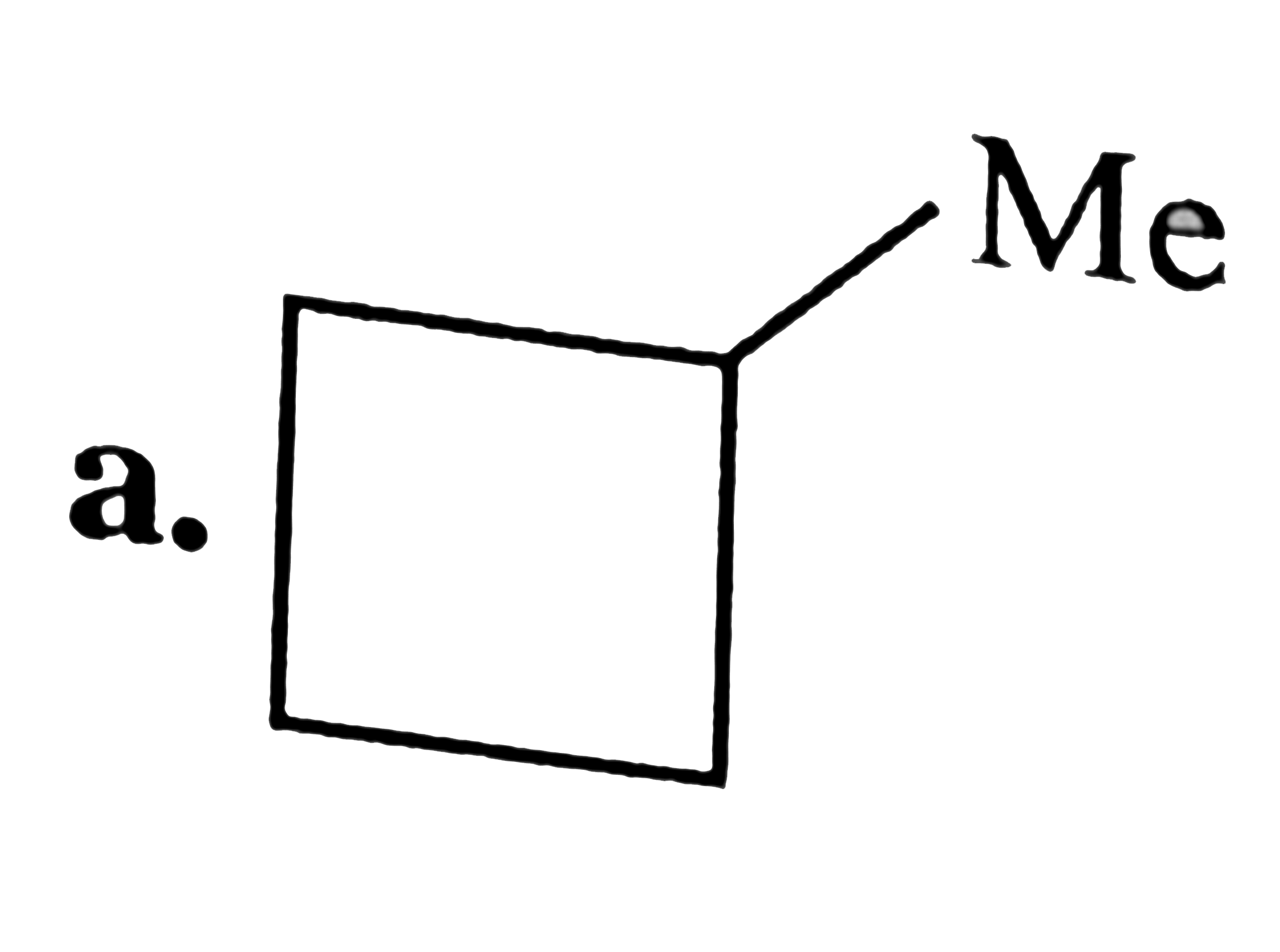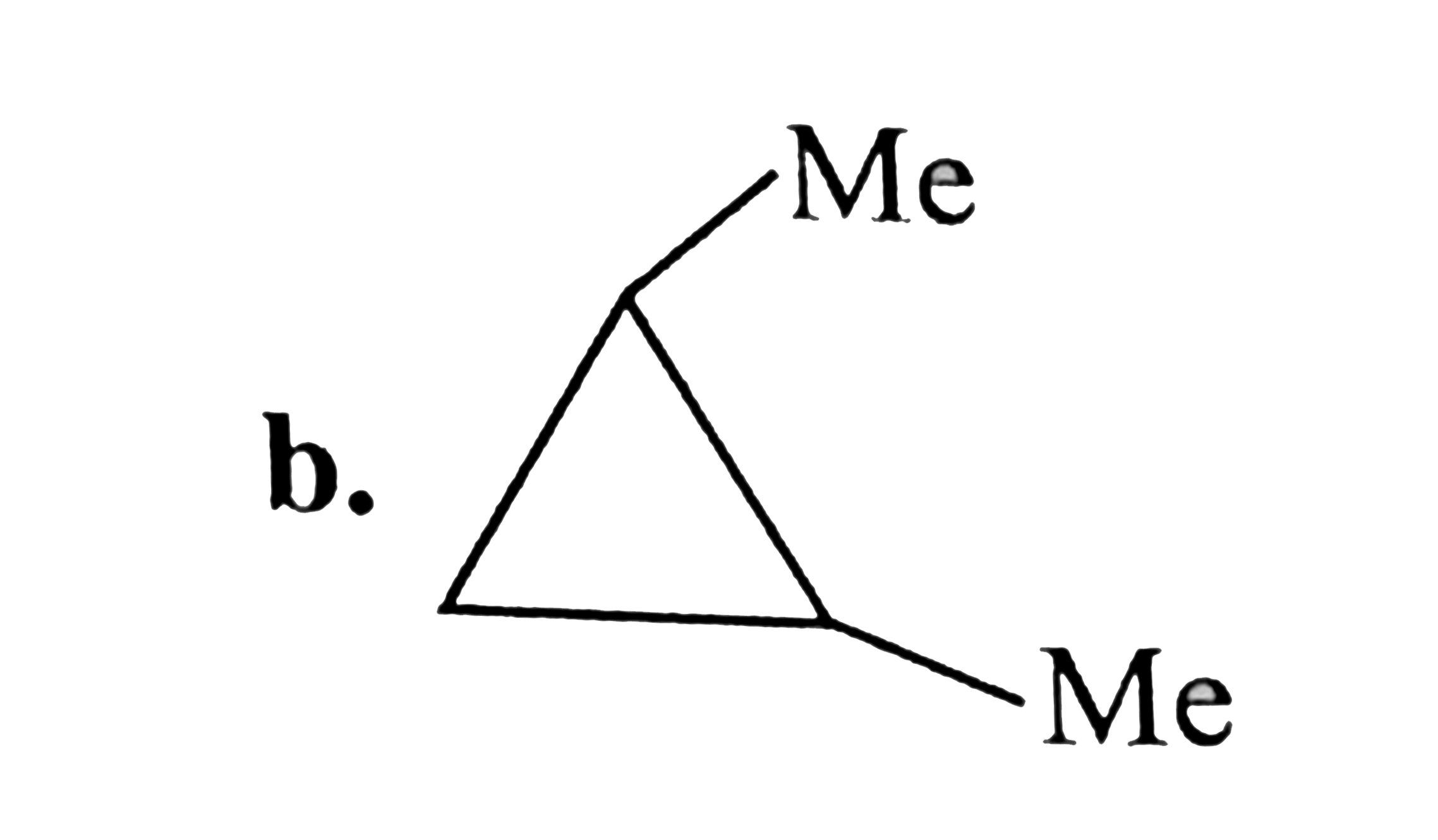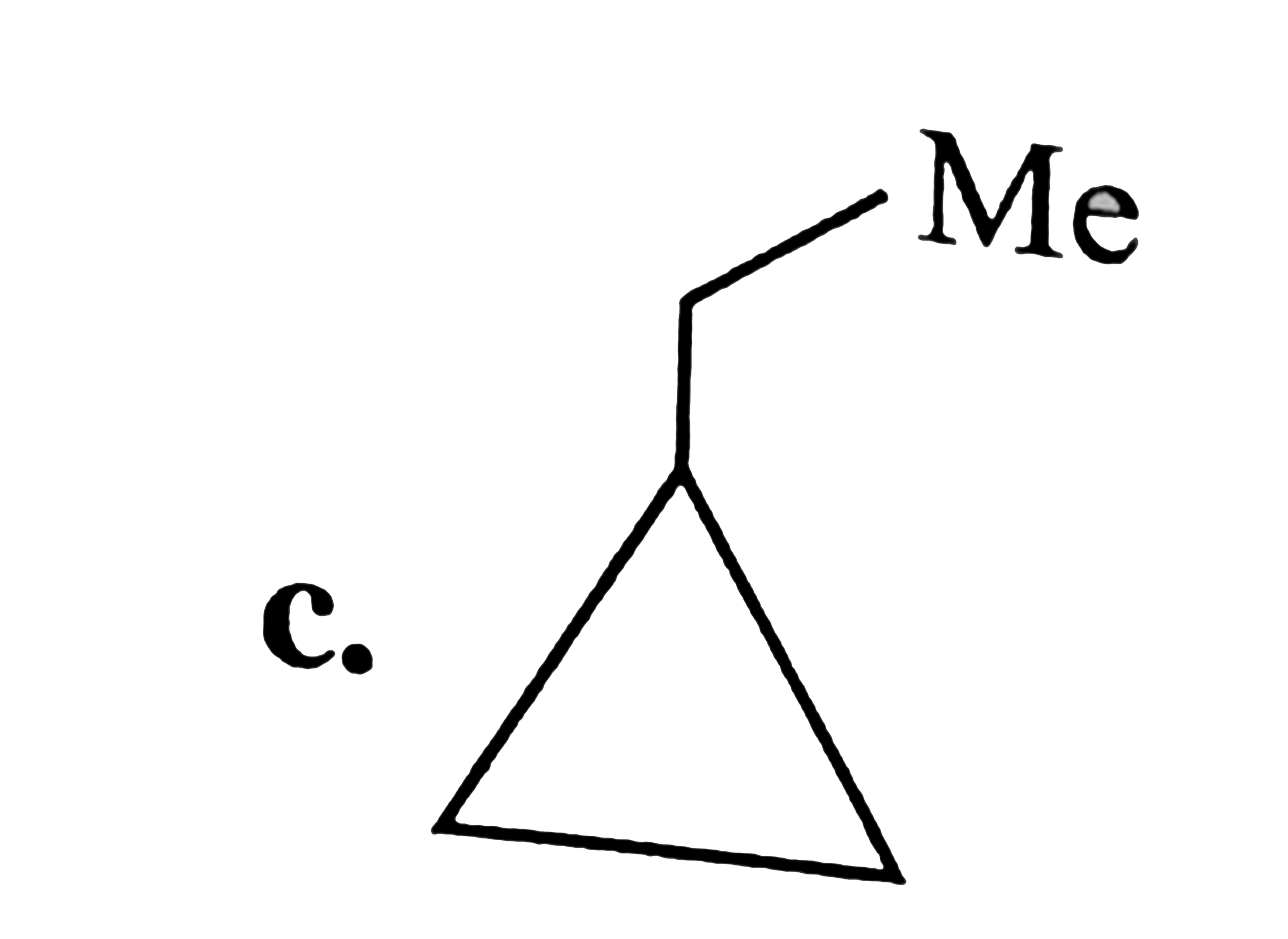A monosubstituted alkyl benzene of the formula C10H14 resists vigorous oxidation to an aryl carboxylic acid. Name the compound and write its various monosubstituted isomers.
To solve the problem, we need to identify the monosubstituted alkyl benzene with the molecular formula C10H14 that resists oxidation to an aryl carboxylic acid.
1. Understanding the Molecular Formula:
The given molecular formula is C10H14. This indicates that the compound is an alkyl benzene, which consists of a benzene ring (C6H6) with an alkyl group attached.
2. Identifying the Structure:
A monosubstituted alkyl benzene means that there is one alkyl group attached to the benzene ring. The presence of the alkyl group will contribute to the overall carbon and hydrogen count.
3. Considering Oxidation Resistance:
The problem states that the compound resists vigorous oxidation to an aryl carboxylic acid. This suggests that the compound does not have any benzylic hydrogen atoms. Benzylic hydrogens are the hydrogens attached to the carbon adjacent to the benzene ring. If there are no benzylic hydrogens, the compound will not undergo oxidation to form an aryl carboxylic acid.
4. Choosing the Alkyl Group:
The only alkyl group that can be attached to the benzene ring without having any benzylic hydrogens is a tert-butyl group. The structure of tert-butyl is:
(CH3)3C-
This means that the compound will be tert-butylbenzene.
5. Verifying the Molecular Formula:
- The tert-butyl group contributes 4 carbons and 9 hydrogens.
- The benzene ring contributes 6 carbons and 6 hydrogens.
- Therefore, the total is C10H14 which matches the given formula.
6. Naming the Compound:
The name of the compound is tert-butylbenzene.
7. Identifying Monosubstituted Isomers:
The various monosubstituted isomers of C10H14 can be derived by attaching different alkyl groups to the benzene ring. The possible isomers include:
- Ethylbenzene (C2H5)
- Propylbenzene (C3H7)
- Isopropylbenzene (C3H7)
- Butylbenzene (C4H9)
- Isobutylbenzene (C4H9)
- tert-butylbenzene (C4H9)
- Pentylbenzene (C5H11)
- Hexylbenzene (C6H13)
Final Answer:
The compound is tert-butylbenzene. The various monosubstituted isomers of C10H14 include:
- Ethylbenzene
- Propylbenzene
- Isopropylbenzene
- Butylbenzene
- Isobutylbenzene
- tert-butylbenzene
- Pentylbenzene
- Hexylbenzene
The given molecular formula is C10H14. This indicates that the compound is an alkyl benzene, which consists of a benzene ring (C6H6) with an alkyl group attached.
A monosubstituted alkyl benzene means that there is one alkyl group attached to the benzene ring. The presence of the alkyl group will contribute to the overall carbon and hydrogen count.
The problem states that the compound resists vigorous oxidation to an aryl carboxylic acid. This suggests that the compound does not have any benzylic hydrogen atoms. Benzylic hydrogens are the hydrogens attached to the carbon adjacent to the benzene ring. If there are no benzylic hydrogens, the compound will not undergo oxidation to form an aryl carboxylic acid.
The only alkyl group that can be attached to the benzene ring without having any benzylic hydrogens is a tert-butyl group. The structure of tert-butyl is:
(CH3)3C-
This means that the compound will be tert-butylbenzene.
- The tert-butyl group contributes 4 carbons and 9 hydrogens.
- The benzene ring contributes 6 carbons and 6 hydrogens.
- Therefore, the total is C10H14 which matches the given formula.
The name of the compound is tert-butylbenzene.
The various monosubstituted isomers of C10H14 can be derived by attaching different alkyl groups to the benzene ring. The possible isomers include:
- Ethylbenzene (C2H5)
- Propylbenzene (C3H7)
- Isopropylbenzene (C3H7)
- Butylbenzene (C4H9)
- Isobutylbenzene (C4H9)
- tert-butylbenzene (C4H9)
- Pentylbenzene (C5H11)
- Hexylbenzene (C6H13)
The compound is tert-butylbenzene. The various monosubstituted isomers of C10H14 include:
- Ethylbenzene
- Propylbenzene
- Isopropylbenzene
- Butylbenzene
- Isobutylbenzene
- tert-butylbenzene
- Pentylbenzene
- Hexylbenzene
Topper's Solved these Questions
- BOOK - MODERN PUBLICATIONCHAPTER - HYDROCARBONSEXERCISE - PRACTICE PROBLEMS34videos
HYDROCARBONS
- BOOK - MODERN PUBLICATIONCHAPTER - HYDROCARBONSEXERCISE - Conceptual Questions20videos
HYDROCARBONS
- BOOK - MODERN PUBLICATIONCHAPTER - HALOALKANES AND HALOARENESEXERCISE - UNIT PRACTICE TEST12videos
HALOALKANES AND HALOARENES
- BOOK - MODERN PUBLICATIONCHAPTER - HYDROGENEXERCISE - UNIT PRACTICE TEST (for Board Examination)9videos
HYDROGEN
Similar Questions
Write the isomers of the compound having formula C4H9Br
View SolutionCompound (A), an alkene with molecule formula (C5H10) exists in various strictures. On mononcholorination and dichlorination, it again shows various structures and streoisomers.
Another isomer (II) on monochlorination gives two products. The isomer (II) is:View Solution
Knowledge Check
- Question 1 - Select One
A compound 'A' with formula C3H8O possess two structural isomers. On oxidation it produces an acid. Compound A is
A1-propanalB2-propanoneC1-propanolD2-propanal - Question 2 - Select One
Compound with molecular formula C3H8O on vigorous oxidation produces an acid C3H6O2. It is
A3∘ alcoholB2∘ alcoholC1∘ alcoholDnot necessary - Question 3 - Select One
Compound (A), an alkene with molecule formula (C5H10) exists in various strictures. On mononcholorination and dichlorination, it again shows various structures and streoisomers.
Isomer (III) on monochlorination gives three products. The isomer (III) is:A B
B C
C D
D
Compound (A), an alkene with molecule formula (C5H10) exists in various strictures. On mononcholorination and dichlorination, it again shows various structures and streoisomers.
One of the cyclic isomers of (A) on monochlorination gives one product. The isomer (I) is:View SolutionA compound A with molecular formula C6H10 on oxidation with hot KMnO4 gives hexandioic acid. A is
View SolutionCompound (A), an alkene with molecule formula (C5H10) exists in various strictures. On mononcholorination and dichlorination, it again shows various structures and streoisomers.
Which isomer of (A) shows styereoisomerism ?View SolutionCompound (A), an alkene with molecule formula (C5H10) exists in various strictures. On mononcholorination and dichlorination, it again shows various structures and streoisomers.
The total number of stereoisomerism shown by isomer in Q.No 26 is:View SolutionCompound (A), an alkene with molecule formula (C5H10) exists in various strictures. On mononcholorination and dichlorination, it again shows various structures and streoisomers.
View Solution

